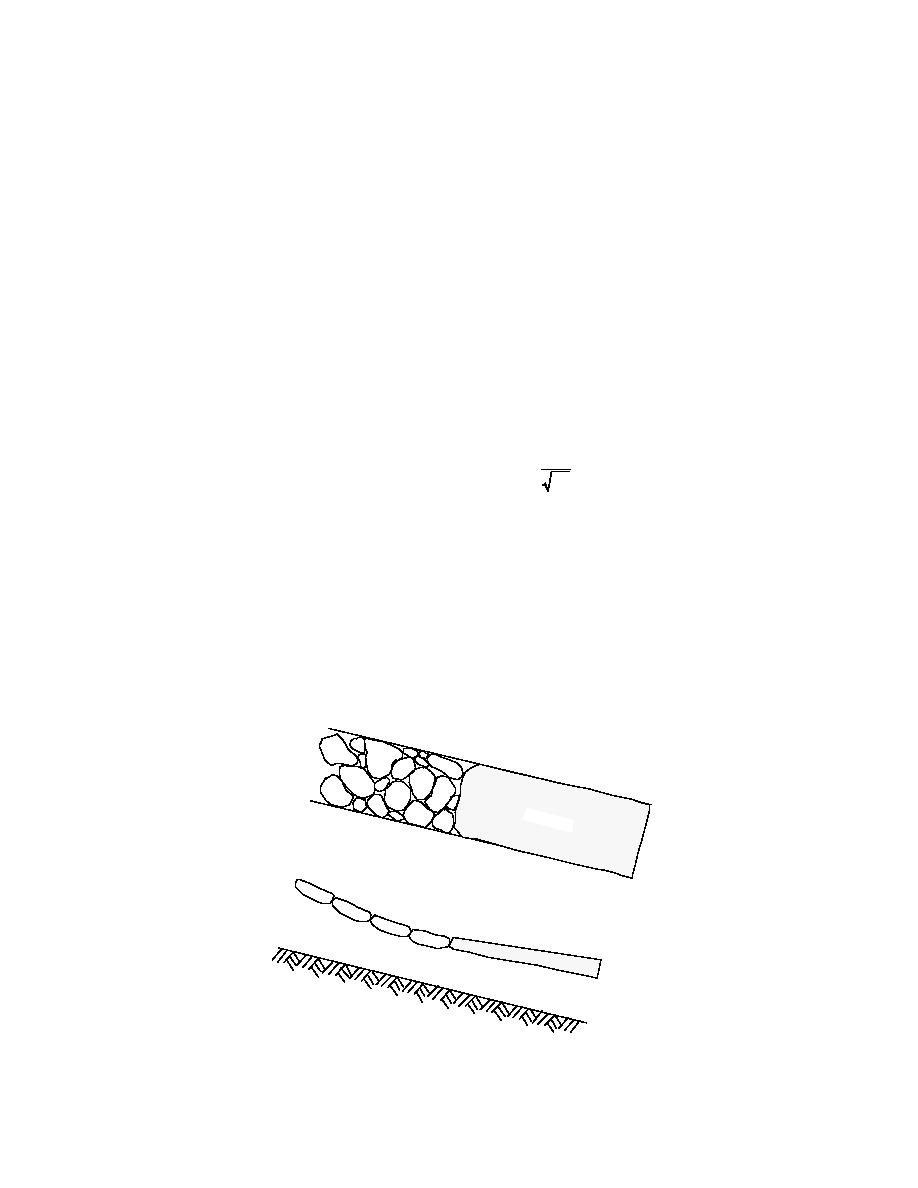
tively independent of temperature: if the river
The critical velocity would be the maximum ve-
slope is mild, juxtaposed ice covers form, and if
locity at which juxtaposition can still occur; higher
the slope is steep, the ice cover will form from
velocities would result in underturning of ice floes
shoving. Once formed, ice covers can also thicken
or shoving. Majewski and Grzes (1986), for ex-
via thermal processes, by flooding and refreezing
ample, reported that velocities less than about 0.5
of the surface, or by transport and deposition of
to 0.7 m/s allowed juxtaposition in one reach of
ice beneath the cover. An overview of the processes
the Vistula River, Poland, while greater than 0.6
resulting in the formation of ice covers and ice jams
to 0.7 m/s caused shoving. The idea of a critical
is presented below.
velocity criterion is attractive, yet it fails to account
for many of the important variables, such as ice
discharge, and the thickness, size, and cohesion
Ice cover formed from juxtaposition of ice floes
Juxtaposition occurs when frazil or solid ice
of the ice floe. As a result, a surface velocity crite-
floes carried downstream reach an obstacle (such
rion is not acceptable except in limited, site-
as an ice cover) and stop, forming a single layer
specific cases.
ice cover (Fig. 1). Freezeup accumulation and pro-
Efforts to expand the critical surface criterion
gression due to juxtaposition can be quite rapid.
led to variations on the Froude number (e.g.,
For example, Gerard and Andres (1982) noted rates
Pariset and Hausser 1961, Pariset et al. 1966). The
of up to 7 km/day for a freezeup jam on the North
Froude number, F, is the ratio of inertial forces to
Saskatchewan River, Alberta, while Beltaos (1983)
gravity forces:
reported 8.4 km/day over a 20-hour period on the
v
F=
(1)
Thames River, New Brunswick. The physical pro-
gd
cess of the juxtaposition of frazil or solid ice floes
where v is the average velocity upstream from the
into a single layer ice cover has not yet been care-
ice cover, g is gravity (981 cm/s2), and d is some
fully described, perhaps because these ice accu-
appropriate length scale, generally taken to be the
mulations are less threatening than thickened
upstream flow depth, H, for open-water situations.
jams. Yet, juxtaposition is often the primary pro-
A more appropriate length scale when consider-
gression mode for initial ice cover formation in
ing ice transport would be the ice piece thickness.
large rivers and for freezeup jams. Traditionally,
For ease in application, a juxtaposition criterion
two approaches have been taken in determining
based on F is often presented in the form of a ve-
whether the incoming ice floes will be stable and
locity criterion. Pariset and Hausser (1961) pre-
juxtaposition is possible: use of a surface velocity
sented their Froude criterion in the form of a criti-
criterion or of a criterion describing the rotational
cal velocity, but as they observed, ice covers have
stability of the incoming ice floes.
Ice C
over
Figure 1. Typical juxtaposed ice cover, formed here from large
broken pieces of sheet ice.
2



 Previous Page
Previous Page
